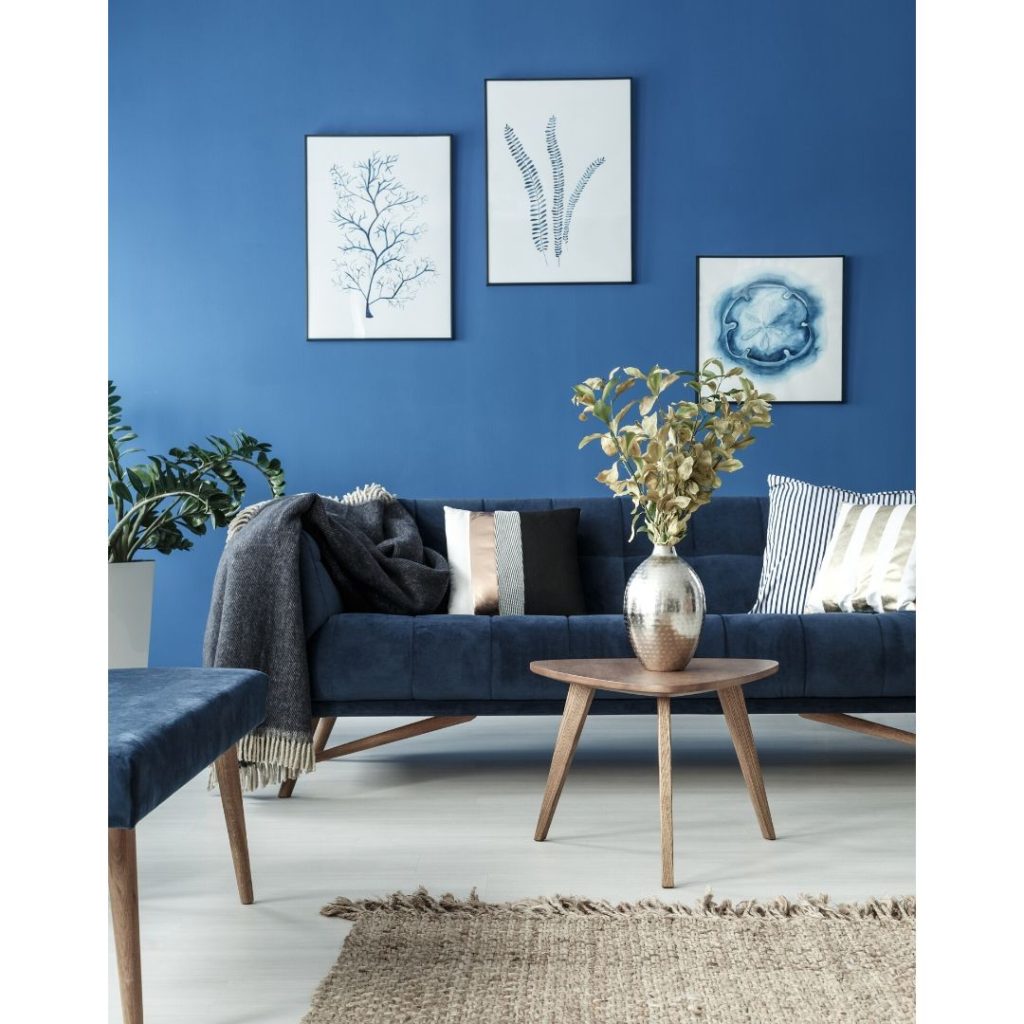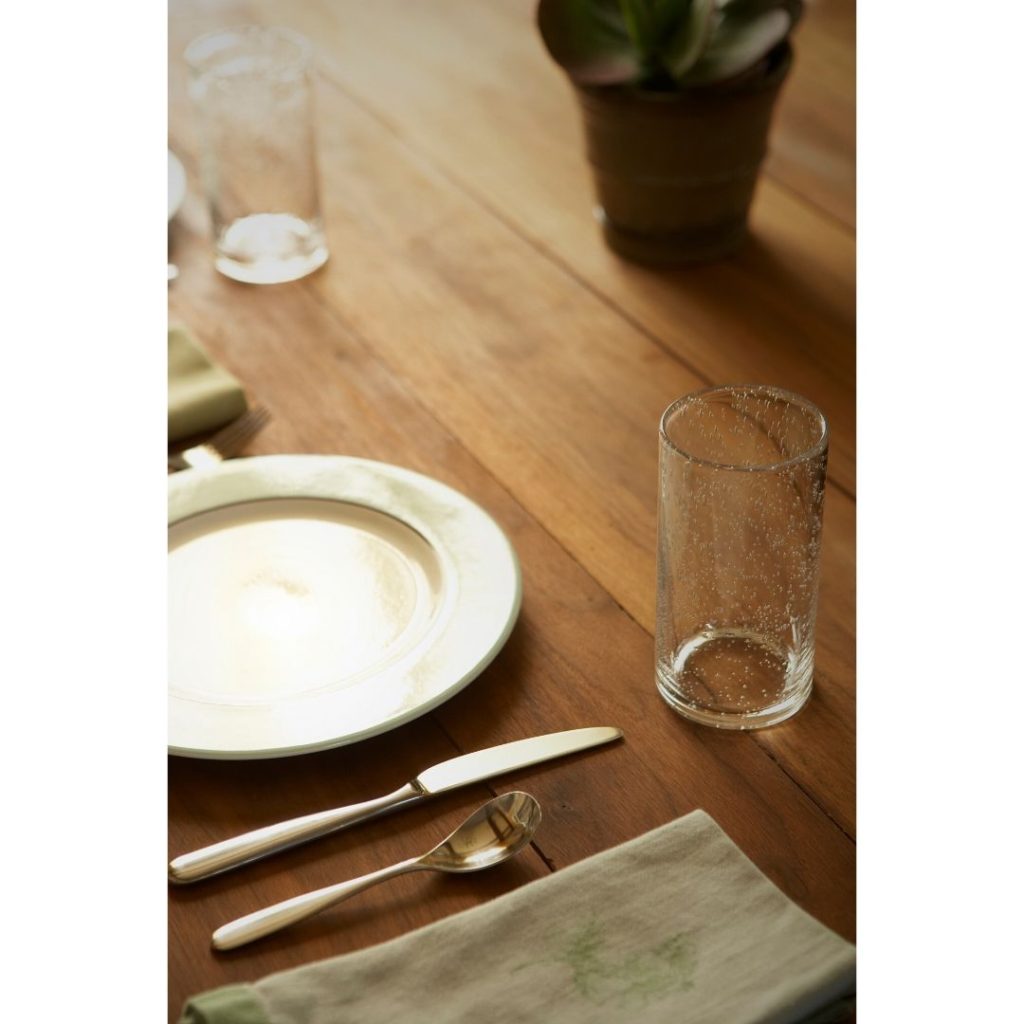
Have you confused solid wood, hardwood, and composite wood? You’re not alone. So.many.people confuse these terms and use them interchangeably.
However, they have entirely different meaning— and healthiness level.
In this article, we’ll explain the difference between solid wood and composite wood, which rooms should have solid wood furniture, and why it matters.
Solid Wood vs. Composite Wood: What’s the Difference?
Solid Wood
Solid wood means that the entire piece of wood is actually wood (!) instead of fillers and binders that can be toxic to health.
Solid wood is the healthiest form (compared to composite wood).
How do you know your organic, nontoxic wood furniture is made of solid wood?

It will state “solid wood” on the product description.
Almost too easy, right?!
When choosing solid wood furniture, be sure allllll parts of the furniture are made of solid wood. For example, when buying a bed frame, be sure the frame, frame slats, and headboard are all made of solid hardwood.
Bonus: Solid wood furniture can be finished with nontoxic finishes.
Yaaaaa, baby!
Composite Wood
Composite wood, on the other hand, is made of several ingredients. That’s why this form of wood is called a composite wood.
The exact ingredients vary depending on the manufacturer and exact type of composite wood.
However, they all have 2 types of ingredients in common. They’re made of:
- Wood dust or wood particles; and
- Glues, adhesives, and/or resins.
Glues and adhesives are typically made of human-made chemicals that have been tied to health effects and poor indoor air quality.
Resins are often made of plastic and adhesives–also made of human-made chemicals that are harmful to health.
Further, (there’s more?, eek) wood furniture made of composite wood often has a veneer finish. Reason being, stains, sealers, and paints look terrible on composite wood—the finishes don’t soak into the wood evenly (since the product is made of wood particles, plastics, adhesives).
What Rooms Should Have Solid Wood Furniture?
- All Bedrooms. The #1 place to have organic, nontoxic wood furniture (plus, sheets, drapes, etc) is in the bedroom.
Kids and adults alike need a good night’s sleep—measured by the number of hours and quality of sleep.
One of the most strategic ways to get quality sleep is to create a healthy bedroom for kids and adults to sleep in. Therefore, all bedrooms should have furniture made of solid wood vs. composite wood.
This includes bed frames and headboards, night stands, dressers, rocking chairs, cribs, changing tables, book shelves, and toy boxes.

- The Living Room. Most of us want our living room to be a place to relax, entertain, and spend time playing games with family and friends. We go to great lengths to pick out ‘our’ style of living room furniture, but often don’t think about how it’s affecting our indoor air quality or health.
Living room furniture includes couch frames, end tables, coffee tables, library desks, and book shelves.

- The Kitchen. We eat organic food to nourish our cells. Doesn’t it make sense to eat in a kitchen that’s not off-gassing? Absolutely!
Wood furniture in the kitchen includes table and chairs, hutches, storage cabinets, free-standing pantries.

Why It Matters
In one word: health. Clean indoor air quality leads to good health, according to a large number of studies.
The #1 way to achieve good indoor air quality is to eliminate the sources of chemicals (and mold).
When choosing organic, nontoxic wood furniture—furniture made of solid wood instead of composite wood—you’re creating a home with good indoor air quality. Thereby, creating a healthier home environment for yourself, your family, your pets.
These positive changes can lead to:

- Sleep Better. Studies show that by reducing the VOCs, SVOCs, and other sleep- and hormone-disrupting chemicals in your bedroom, you get better sleep at night.
Better sleep leads to better healing each night, as our bodies work hard (while we’re in dream land) to eliminate the toxins we’re exposed to during a typical day.
- Reduce Swelling and Inflammation in the Body. Nearly every single person I talk to has inflammation. It’s at the root of chronic illness of all types.
Scientifically, swelling causes the body to create free radicals, which causes more swelling. This snowball effect is continuous.
A key strategy for reducing inflammation in the body is to reduce the number of chemicals you’re exposed to in your home—where you have the greatest decision-making power!
- Fewer Damaged Cells. Cancer and other illnesses develop due to our cells being damaged. Breastcancer.org has an awesome (and disturbing) graphic that shows what happens.
In short, chemicals damage a cell. That damaged cell does 1 of 3 things:
- Creates another damaged cell
- Creates a new healthy cell
- Dies

As you can see, the odds of a damaged cell creating a new healthy cell are 1 in 3 (not that great), while odds of producing another damaged cell or the cell dying is a 2 in 3 chance. Poop.
- Feel Better. As you can imagine, when you’re getting better sleep, reducing swelling, and giving cells a healthy indoor environment, you feel better!
Happiness, clarity, energy, fewer allergies, infections and illness are some of the many benefits that I’ve personally experienced. And it feels amazing.

- Better Relationships (even with your teenager). When you feel better, you have more patience and compassion for yourself and others. This leads to healthier relationships—even with your teenager.
Listen to this radio interview with ARBICO Organics to hear the positive experience I had with my 15-year-old after I created by best organic, chemical-free home.
- Air Smells Fresher. “Your house smells so clean and fresh!” That’s the comment I’d heard most when hosting game nights and dinner with friends and family.
There were no fragrance emitters (sprays, candles, potpourri, oils). The air smelled clean and fresh because it was organic and chemical-free—because there were minimal amounts of chemicals in the air.

- Feel Good Doing Good. Feel PROUD that you are making the choice to create a healthy home environment! You should feel good knowing that your indoor air quality can lead to good health for you, your kids and family, your pets, your guests. Feel good seeing your relationships and happiness improve. Feel good hearing flattering complements about your fresh-smelling home!

How Can Live Life Help?
We give you the tools to easily find organic, chemical-free products – that fit your style and budget.
Our tools and tips are based on credible and trusted resources.
You can use these simple tools and tips when choosing any wood furniture, including bed frames, tables, chairs, couch frames, TV stands, and more. And have fun doing it!
Your Next Steps
Choosing solid wood organic, nontoxic wood furniture is one step towards feeling great and creating a healthy home environment for you and your family.
Are you ready to create your best organic, chemical-free household and have fun doing it?
Get instant access to our free online class: How to Buy Organic Nontoxic Wood Furniture.
